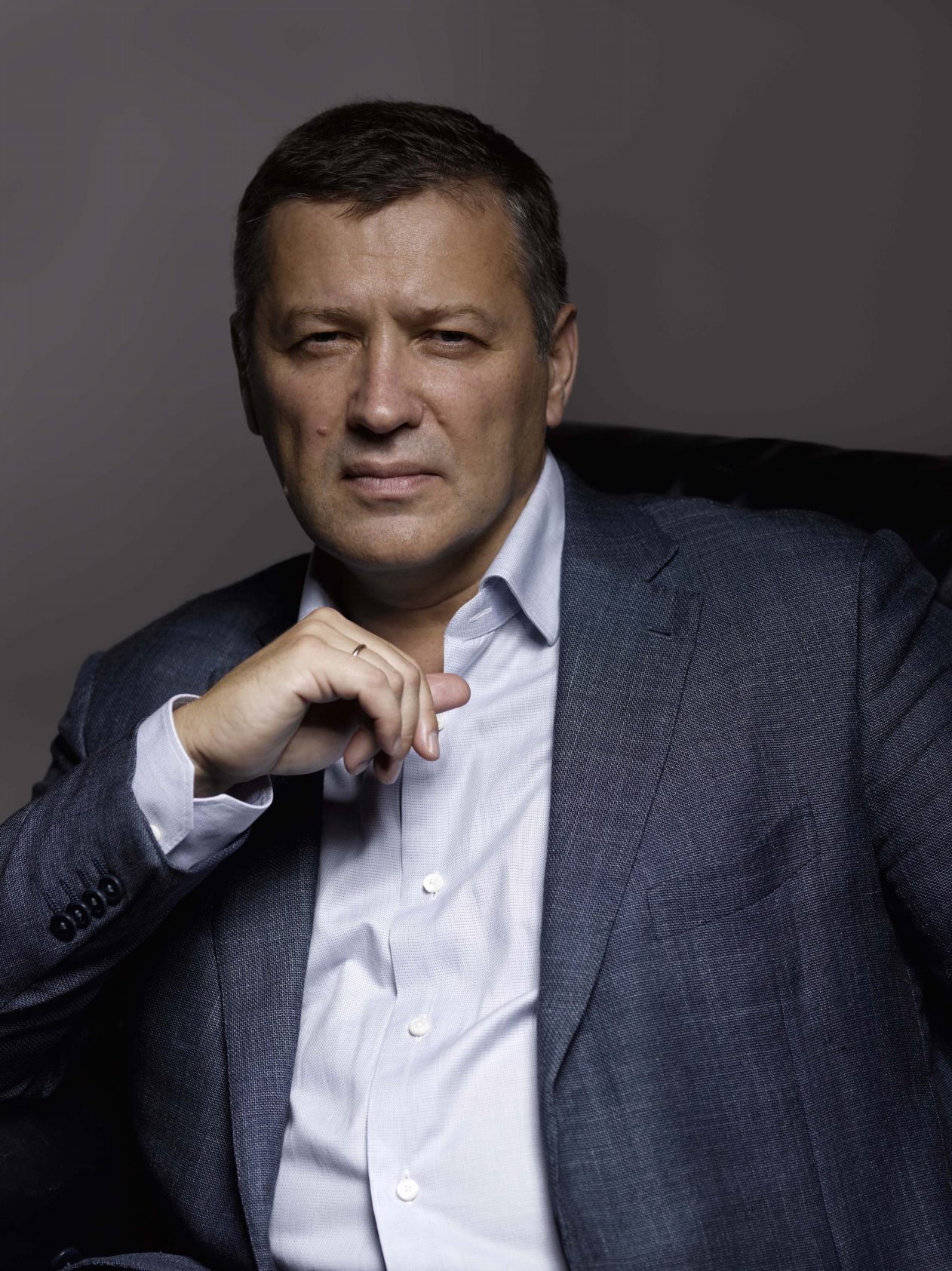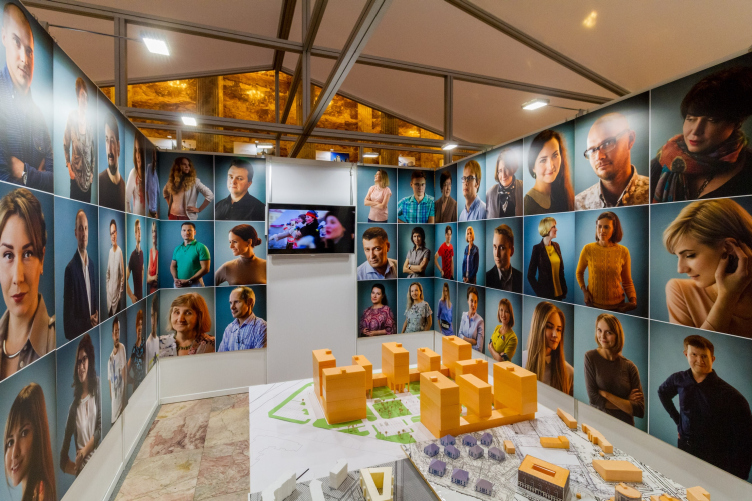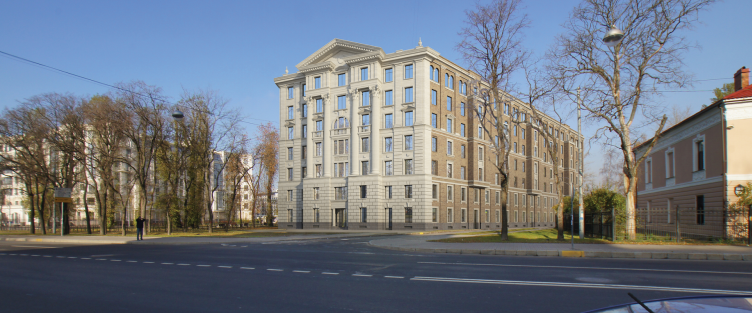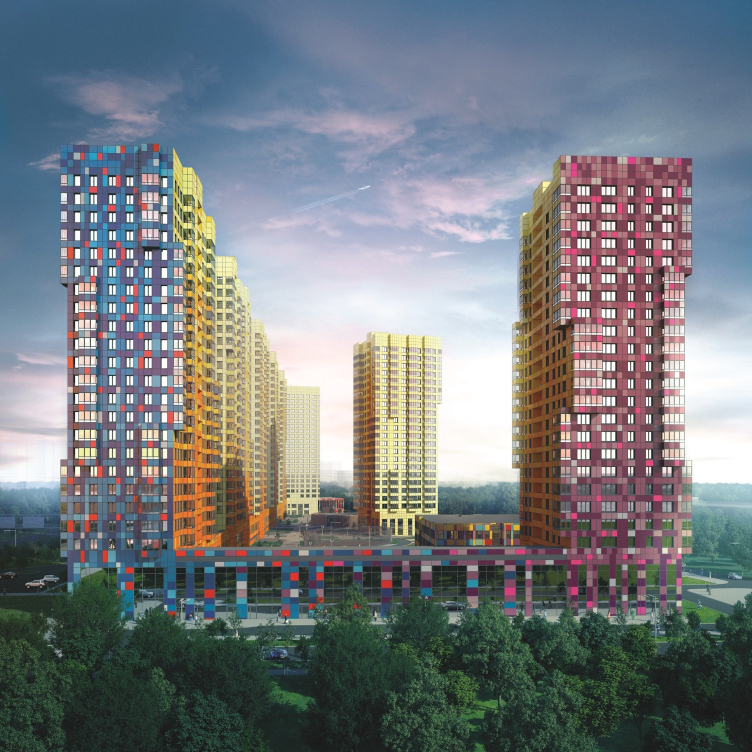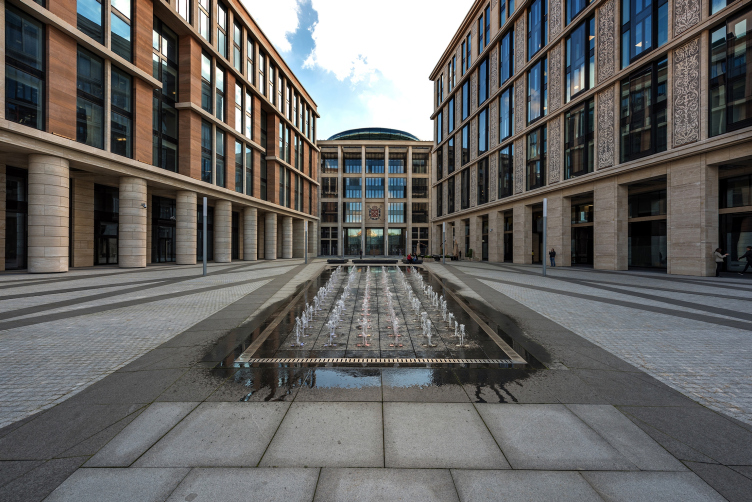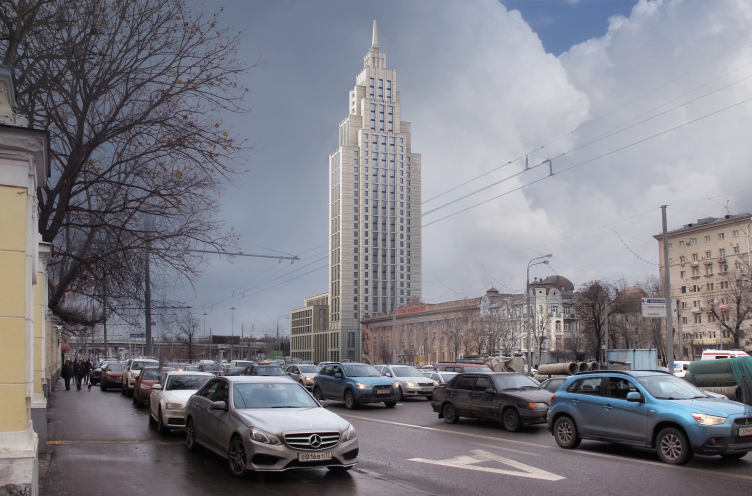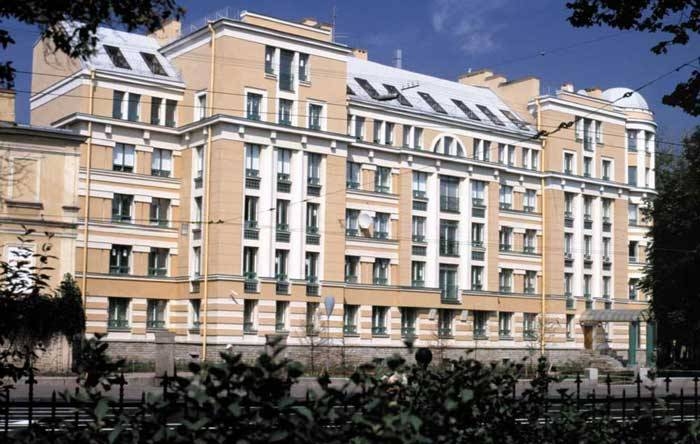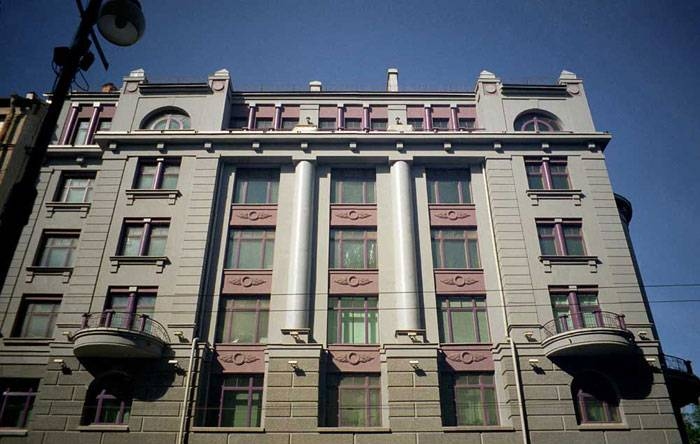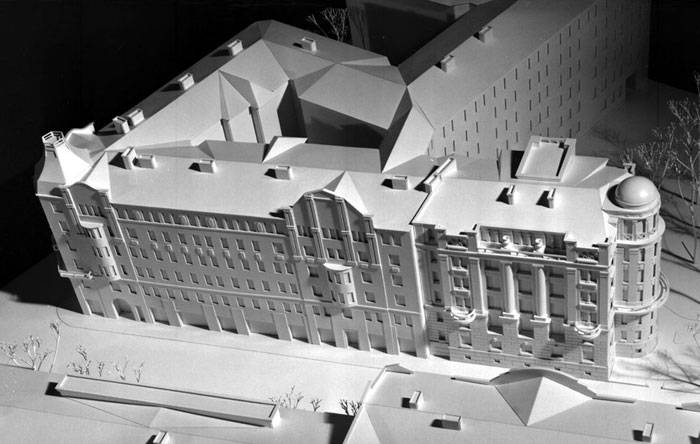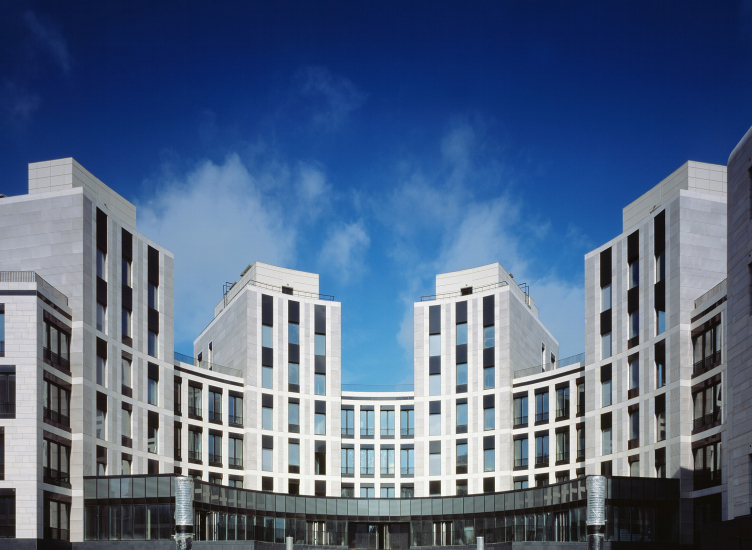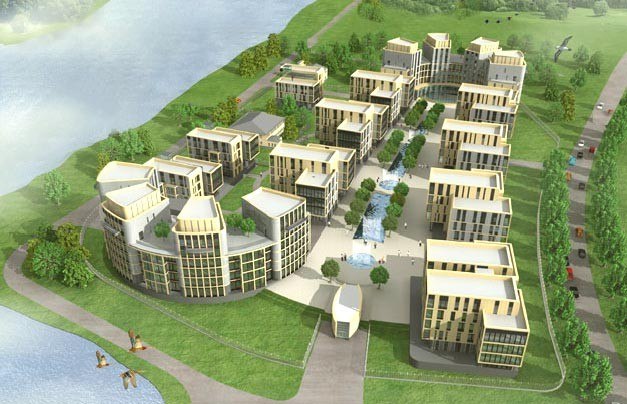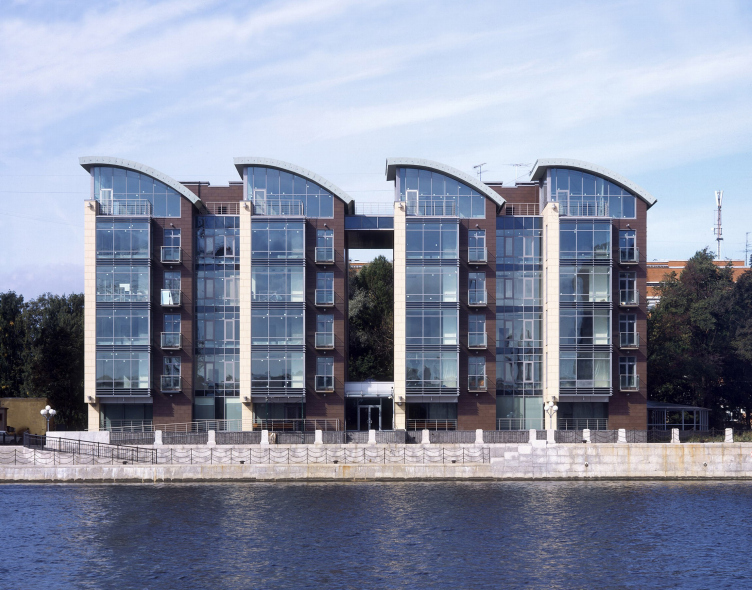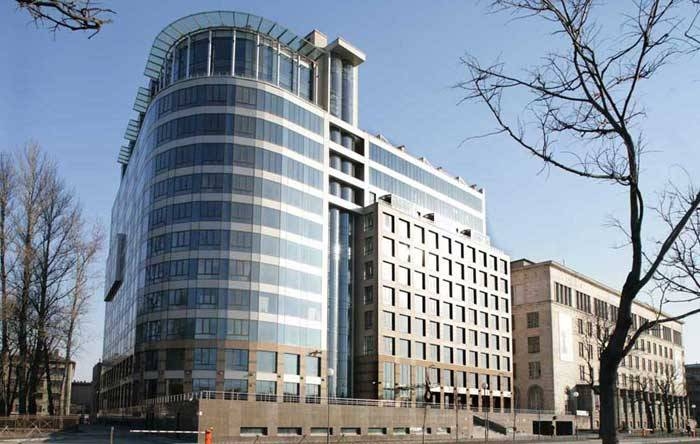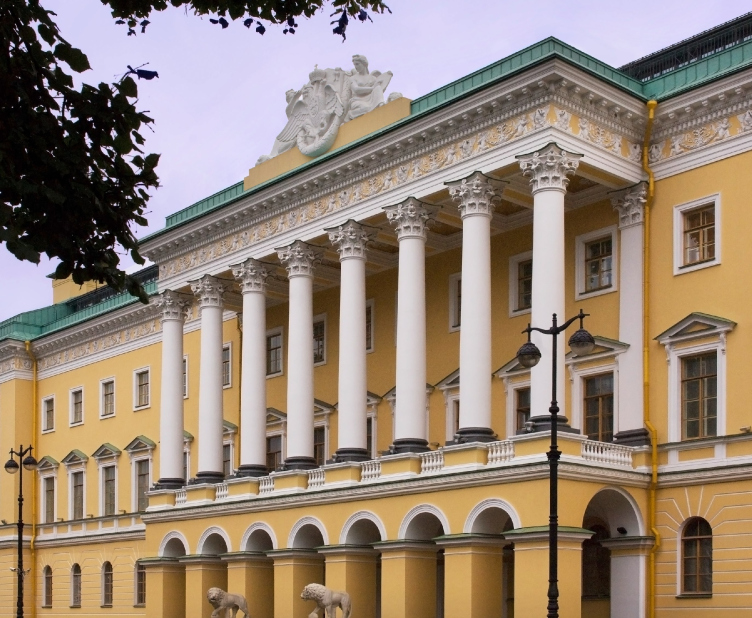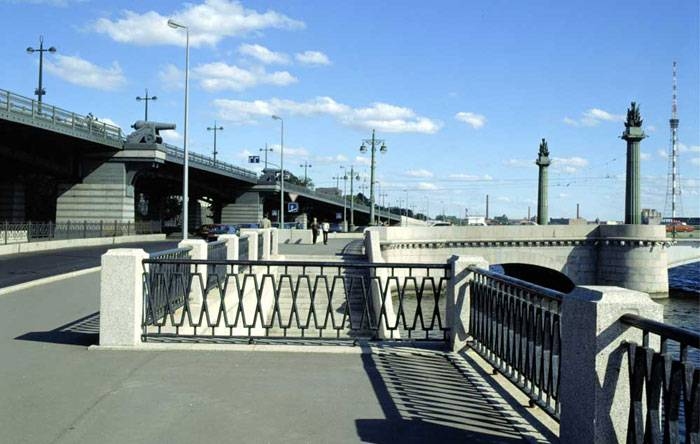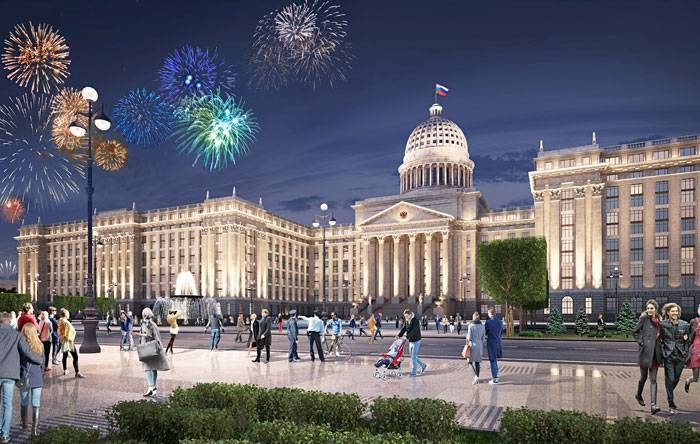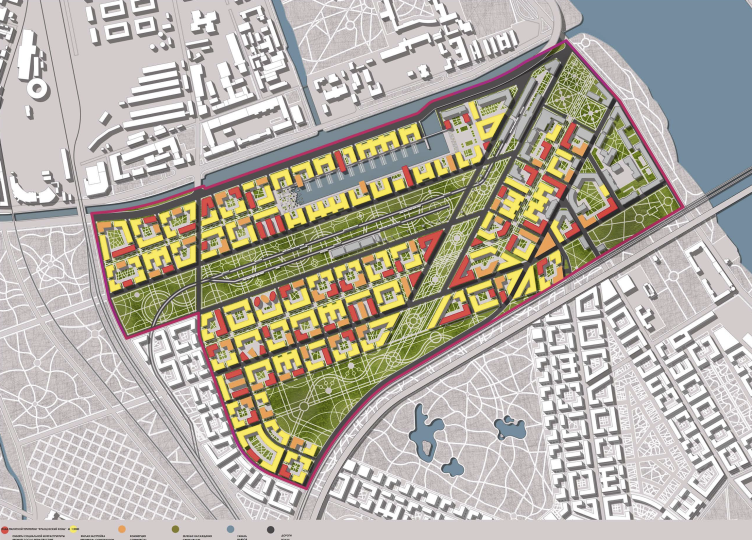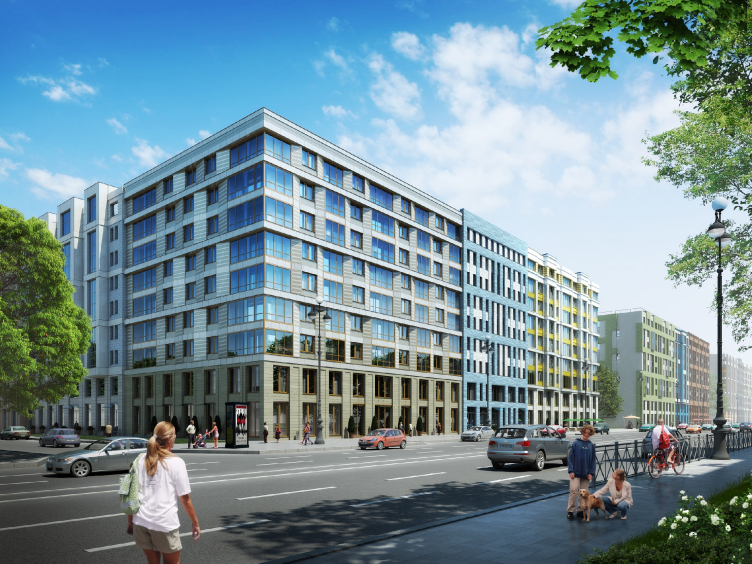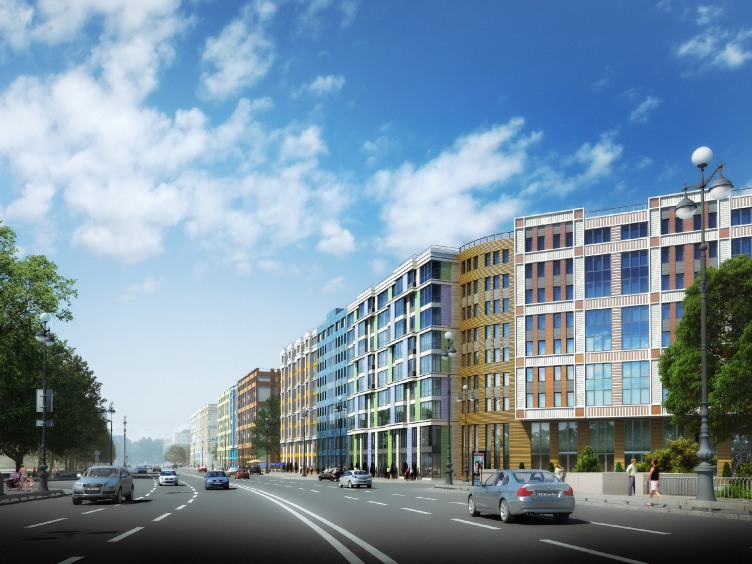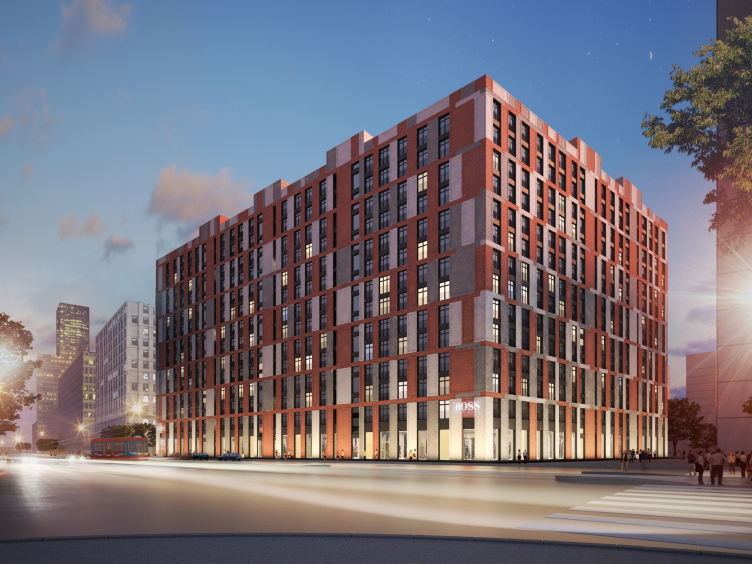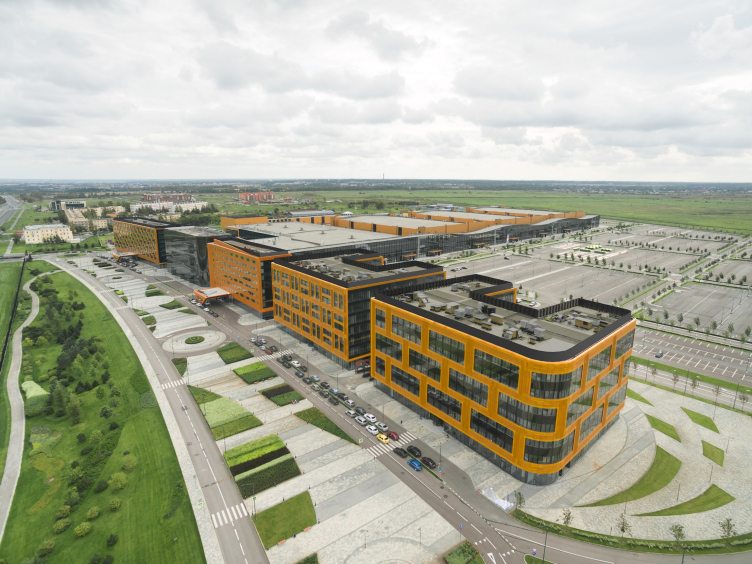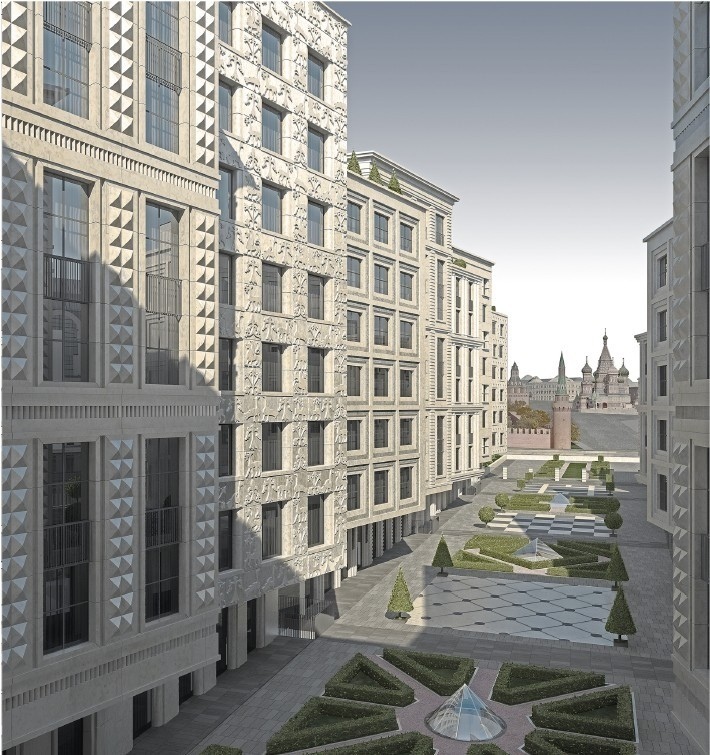Archi.ru:
– The name of your company is “Evgeny Gerasimov and Partners”, these partners being Zoe Petrova and Victor Khivrich?
Evgeny Gerasimov:
– Currently, we have two more partners: Karen Smirnov and Tatyana Komaldinova. Yes, Victor Khivrich and Zoe Petrova have been with us from the very start. We go back a long way with Zoe Petrova – we worked together when still in Lenniiproject. We build our relationship just like partners should: there is a senior partner, not in terms of his age but in terms of his share in the company, and the right to vote differs accordingly. I am the one who makes the final decisions.
– How do you make your decisions?
– We have absolute democracy when it comes to discussion and absolute dictatorship when it comes to implementation. Regardless of their position, be that a young architect or an experienced chief architect of the project, when we start working on a project we consider everybody’s ideas. For each project, we create a workgroup, and, together with me, they arrive at a final decision. Once we’ve made a decision, we cannot afford to swing back and forth and turn to the options that we’ve discarded.
Evgeny Gerasimov. Photo courtesy by "Evgeny Gerasimov and Partners"
The inauguration of the exhibition for the 25th anniversary of "Eugene Gerasimov and Partners". Saint Petersburg, 11.10.2016. Photo © Ivan Kostin
– Are there groups of “classics” and “modernists” in your bureau?
– No, there is no such specialization. We proceed from the location, and, of course, from the customer. And, if the customer wants traditional architecture, you either agree to do the project or just opt out of it. Of course, you can choose one style only and then stick to it, and this is worthy of respect, but, the way I see it, such approach is monotonous.
Multiapartment building with inserted premises on the Morskoy Avenue © Eugene Gerasimov and Partners
Multiapartment buildings on the Komendantsky Prospect. View from the Glukharskaya Street. Project, 2015 © Evgeny Gerasimov and Partners
– What would you name as the main achievement of your company?
– First of all, the sheer fact of its existence; we’ve been around since 1991, and that’s quite a while! And, of course, our projects that have been implemented! Whether somebody likes them or not is a different matter. What matters is the fact that there are a large number of implemented projects that we designed, and for which, among other things, we prepared the working documents.
Our company is focused on designing buildings from the original idea down to the last detailed drawing. We do not put ourselves above the “crude” work, furthermore, we are sure that only if you prepare your working documents yourself, you get a chance to have you project built exactly the way you designed it.
Administrative, business and public center "Nevskaya Ratusha". Construction, 2016. Evgeny Gerasimov and Partners, SPEECH, nps tchoban voss. Photos © Yuri Slavtsov
Multifunctional complex "Alkon III" at the Leningradsky Avenue. Project, 2014 © Evgeny Gerasimov and Partners
– Let’s speak about your background. How did you come into architecture?
– I finished an art school, and, on the one hand, I did not see myself as a pure artist, and, on the other hand, I wanted to have a profession that would still be related to arts and drawing. Back in those days, I was still pretty vague about such things... I was born in Siberia but my childhood, until I was seven, I think, fell on Saint Petersburg. Then we left, due to family circumstances. But when I decided to take up architecture I came to Leningrad again. In 1983 I finished Saint Petersburg State University of Architecture and Civil Engineering, and then I worked at Lenniiproject.
– Who would you name as your teacher?
– I learned from many people. In the college, my professor was Leonid Lavrov. In Lenniiproject, I worked for a long time under the supervision of Yuri Mityurev who was to become later on the chief architect of the city. The head of the studio that I worked at was Oleg Kharchenko who was also the main architect of the city for a long time. And they don’t appoint just anyone as the chief architect of the city. This has to be the right person with a certain frame of mind, and with certain architectural and organizational skills, and I am sure that I’ve been really lucky to work under the guidance of such great people. I saw how these people could draw, think, and work; how they prepared their presentations – because we had no computers back then, and you had to draw by hand – how expertly skillful these people were with the drafting pen, ink, water colors, gouache, and how they could draw perspective drawings simply by hand.
– You founded your company back in 1991. How did it happen?
– In 1990, Mityurev and I left Lenniiproject, and he founded an architectural studio of his own. For half a year, I worked as his deputy director, but a while later we decided to go our separate ways.
– How did your company get along in the nineties?
– It was a very romantic time, in fact. We started in a loft at the Fontanka River that had been formerly occupied by some homeless artists. We disinfested the places of rats ourselves, did all the repairs, and all the electrical work as well. It was there that we got our first computers... We started with drawing boards: water colors, wash drawings… Nobody knew anything about this stuff – how the future would look like, and what things would come along. A whole new class of clients was being formed, new housing typologies were developing, and new construction materials and technologies were introduced. We had to catch all these things on the fly. We had to learn to live and work in a new country.
Multi-apartment building with integrated premises in Baskov Alley © Evgeny Gerasimov and Partners
– How did the idea come about of one of your earliest famous projects - that neoclassical and at the same time postmodernist house on the Kamennoostrovsky Avenue?
– This was the first project that we did for LSR Company. Yes, it was pure postmodernism because at that time we were still hungry for it. When in 1991 freedom was proclaimed, postmodernism was a field that was still unexplored by the soviet architects; we started to eagerly absorb the fruits of postmodernist aesthetics. But then again, we clearly saw the neoclassical nature of that project because it is part of the Kamennoostrovsky Avenue – right across from it, there are these masterpieces by Shchuko and Lancere. We were to complete the even side of the Kamennoostrovsky Avenue. And, as for the style of that building, yes, it is postmodernism of a neoclassical nature with details that are a bit on the rough side.
A housing project on the Suvorovsky Avenue. Construction, 1998. Photo © Evgeny Gerasimov, A. Naroditsky
A residential building on the Kamennoostrovsky Avenue. Construction, 2000 © Evgeny Gerasimov and Partners
– In 2002, you got acquainted with your steady coauthor Sergey Tchoban. How did that acquaintance look to you at the time?
– I went to Berlin in order to examine its architecture that is iconic of postmodernism: Rob Krier, Mario Botta, and others, and the modern architecture of Berlin in general. Hitherto, I had never been to Berlin before. Oleg Kharchenko gave me Sergey Tchoban’s telephone number, and said that he thought it would be interesting for us to meet each other and maybe we would both benefit from it in some way. I had seen some works by Sergey, and he had seen some of mine but we had not met each other in person. So I called, Sergey invited me to his bureau, we had a short conversation, and agreed to have dinner together. We decided that we would give it a try working together, and in winter 2002 we worked on our joint project that we did for LSR – “House by the Sea”.
A residential building on the Kamennoostrovsky Avenue. Construction, 2000. Model © M.Pavlichuk
– How did you come up with the solution for this building?
– Sergey and I work along the same lines. Each of us comes up with different versions, then we pick the most promising and ultimately it all comes down to one final version. Then we test our idea on the project models: they show both plan and volume, and I would even call these working project models the “sacred” basis of the design process, because it is at that period that a lot of things start to take shape. At a recent exhibition, we deliberately paid a lot of attention to it.
In the final version of “House by the Sea” we visually extended the axis of the Grebnoi Channel – “pulled it inside” and continued it. Out of all the apartments, you can see water, and trees on the other side. We used the principle of a city villa: each stairway provides access to three apartments that do not have mutual junctions, each of the apartments being oriented on three sides. We deliberately designed it in a reserved style: stone, metal profiles, and staggered windows...
The housing project "House by the Sea". Construction, 2008. Evgeny Gerasimov and Partners, nps tchoban voss. Photo © A.Naroditsky
– What other works from the mid 2000’s would you specifically mention?
– Above all, the Saint-Petersburg Jewish community center YESOD, for which we got every possible award, and the house named Stella Maris. I don’t really feel comfortable within the confines of one style: I want to reinvent myself in the neoclassical, traditional, and modernist architecture. Both these two projects are definitely modernist. But we’ve done more projects than I care to remember. “Novaya Zvezda” on the Pesochnaya Embankment is also based on the combination of stone and glass...
The housing project "House by the Sea". Visualization. Birds-eye view that allows to appreciate the architectural and town-planning solution and the effect of the gothic S-shaped curve of the complex © Evgeny Gerasimov and Partners, nps tchoban voss
The building of the Saint-Petersburg Jewish community center YESOD. Construction, 2006 © Evgeny Gerasimov and Partners
"Stella Maris" housing project. Construction, 2007. Photo © A.Naroditsky
"Novaya Zvezda" housing project. Construction, 2005. Photo © K.Smirnov
– Which customers do you prefer to work with – private or state-run companies?
– We rarely work with state-run companies.
– And what about the projects of the Olympic committee, and the buildings of the government of the Russian Federation?
– These were all contest projects. Regretfully, we lost all these competitions. There was only one state-run order in our history - the project of the Ushakovskaya road junction. “Sudebny Kvartal” (“Court of Law Quarter”) is but the second case in our 25-year history. We prefer to refrain from working with federal budgets.
Four Seasons Lion Palace Hotel. Photo courtesy by Dornbracht
The Ushakovskaya road junction. Construction, 2000 © Evgeny Gerasimov and Partners
The building of the Olympic Committee of the Russian Federation © Evgeny Gerasimov and Partners
– How do you explain this?
– The state is a rather faceless customer, and the people who are in charge of the project from their side rarely have the feeling of personal responsibility; they, come right down to it, are rather indifferent to architect in general. And we have a hard time working with a customer who is not personally interested in great architecture. So, we’d rather go for an end customer who is interested in getting a beautiful building because it will ultimately sell well.
– You won the competition “Gray Belt of Saint Petersburg”. How is this project developing now?
– We treated this competition from the very start as a show one, and, for that matter, the Committee for City Planning and Architecture did not make much of a secret of it either: they said it themselves that this competition was not of a great practical value. Basically, its idea came down to showing a beautiful picture that this city could be in the perfect world, to painting a dream: a house of your dreams, a block of your dreams, a “gray belt” of your dreams... We submitted our proposal, our idea, and then, well, let the city decide what it likes and what it doesn’t, and how to implement these things into reality.
Concept of the Parliament Center of the Russian Federation. Project, 2015 © Evgeny Gerasimov and Partners
The concept pf transforming the "Gray Belt". Consortium of three architectural companies © Evgeny Gerasimov and Partners, SPEECH, nps tchoban voss
The concept pf transforming the "Gray Belt". Consortium of three architectural companies © Evgeny Gerasimov and Partners, SPEECH, nps tchoban voss
– What projects is your company doing now?
– Currently, we are working on a few housing projects for the company “Legend”: “Legend on the Komendantsky” and “Legend on the Dalnevostochny”. The project of “Sudebny Kvartal” got the appropriate approvals recently. A few housing projects are being built for LSR. On the Krestovsky Island, the buildings named “Russian House” and “Verona” will soon be completed. We are also designing a complex of buildings on the Petrovsky Island. A few construction projects are underway in Moscow: the ZIL is being completed, and the housing project named “Tsarev Sad” (“Tsar’s Garden”) is being built across from the Kremlin on the Sophiyskaya Embankment. We are also designing a new tower on the Leningrad Avenue. The construction of a large housing project called "Europe City" is being finished on the Medikov Avenue – it will be a huge project with interesting ceramic façades.
"LEGENDA on the Dalnevostochny, 12" housing project, 2015 © Evgeny Gerasimov and Partners
Multiapartment residential complex "Europe City" at the Medikov Avenue. Project, 2015 © Evgeny Gerasimov and Partners, SPEECH, nps tchoban voss
Multiapartment residential complex "Europe City" at the Medikov Avenue. Project, 2015 © Evgeny Gerasimov and Partners, SPEECH, nps tchoban voss
– How do you see yourselves on the Russian architectural scene in the recent years?
– We have no comment about that. We appreciate that our company is probably one of the best in Saint Petersburg. Arguably, our company is one of the best in Russia as well because we get invited to high-profile competitions here, and in Moscow. “One of the best” – we are quite cool with this position. We do not make a point of becoming the only top company. We are interested in designing for Moscow – we did three projects there. We are interested in designing for Saint Petersburg. In the regions, the customers are not ready to pay adequate prices, so the tasks are less interesting.
A housing project in the ZIL Art complex on Moscow. Project, 2015 © Evgeny Gerasimov and Partners
Year after year, we work with a small circle of customers: we’ve been working for decades with LSR, LenspetsSMU. We work with Setl City, RBI, “Legend”, and other companies with whom we’ve done one or two projects. I think that an established circle of steady customers is a great thing for an architect to develop.
Congress and convention center "Expoforum" on the Peterburgskoe Highway. Construction, 2014. Evgeny Gerasimov and Partners, SPEECH, nps tchoban voss. Photo © D.Chebanenko
A project by "Evgeny Gerasimov and Partners". Decoration of the facades from natural stone and the organization of the inner yard
